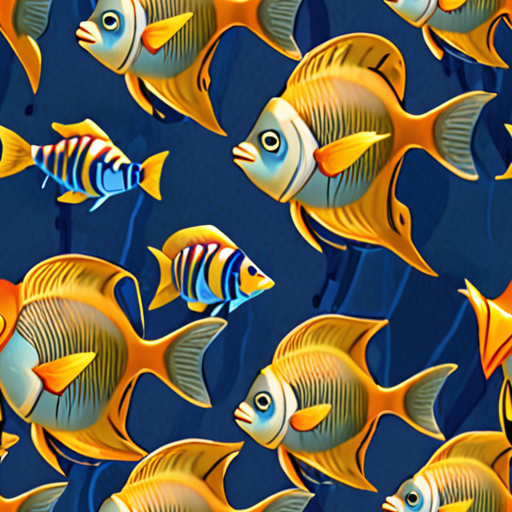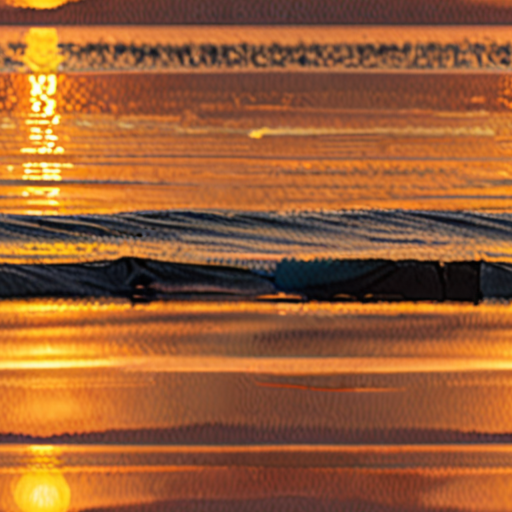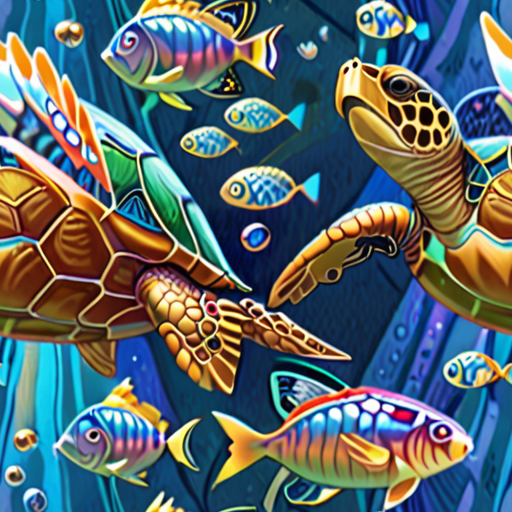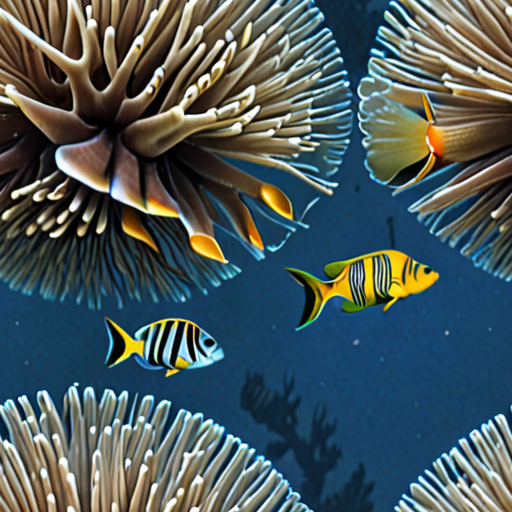As we delve into the vast expanse of our oceans, it’s easy to become captivated by the breathtaking beauty of marine life. However, capturing these moments through photography can be a daunting task, especially for those new to ocean life photography. With the right techniques and knowledge, anyone can master the art of taking captivating underwater images that showcase the majesty of our oceanic world.

Optimizing Camera Settings for Ocean Photography
To capture stunning ocean photographs, it’s essential to understand the best camera settings to use.
- ISO: A lower ISO setting, such as 100 or 200, will minimize noise and ensure a cleaner image. However, if you’re shooting in low-light conditions, consider increasing the ISO to 400 or 800, but be cautious of potential noise.
- Aperture: A wider aperture (lower f-stop number) will allow more light into the lens, resulting in a shallower depth of field and a more blurred background. Aim for an aperture between f/2.8 and f/5.6 for optimal results.
- Shutter Speed: Faster shutter speeds (1/500th of a second or faster) will freeze motion and prevent blur, ideal for capturing waves or moving subjects. Slower shutter speeds can create a sense of movement and blur, perfect for artistic effects.
- White Balance: Set your white balance to “Cloudy” or “Shade” to capture the warm tones of the ocean and sky. Alternatively, use “Auto White Balance” for more flexibility.
- Image Stabilization: Enable image stabilization on your camera or lens to reduce camera shake and blur caused by hand movement or low light conditions.
When shooting ocean photography, it’s crucial to consider the lighting conditions. Golden hour, just before sunset, offers soft, warm light ideal for capturing the ocean’s colors and textures. Overcast skies can also provide excellent lighting, reducing harsh shadows and highlights.
Additionally, pay attention to composition and framing. Use leading lines, such as waves or shorelines, to guide the viewer’s eye towards the subject. Experiment with different angles and perspectives to add visual interest and depth to your photos.
By mastering these camera settings and techniques, you’ll be well on your way to capturing breathtaking ocean photographs that showcase the beauty and power of the sea.
Recommended Gear for Ocean Photography
- Lenses: Wide-angle lenses (10-24mm) are ideal for capturing expansive ocean views, while telephoto lenses (70-200mm) are better suited for compressing perspective and isolating subjects.
- Camera Bodies: Full-frame cameras offer improved low-light performance and dynamic range, making them suitable for ocean photography.
- Tripods and Monopods: Use sturdy tripods or monopods to stabilize your camera, allowing for sharper images and reduced camera shake.
Tips for Improving Your Ocean Photography Skills
- Practice Patience: Wait for the right moment to capture the shot, whether it’s during golden hour or when the tide is low.
- Experiment with Composition: Try different angles, perspectives, and leading lines to add visual interest to your photos.
- Pay Attention to Lighting: Understand how lighting affects your shots and adjust your camera settings accordingly.
Mastering Ocean Photography: Essential Tips for Captivating Sea Images
To capture stunning ocean photographs, it’s crucial to understand the basics of photography and adapt to the dynamic environment of the sea.
-
Choose the Right Equipment
A high-quality camera with a waterproof housing is essential for capturing sharp and vibrant images underwater. Consider investing in a camera with manual settings and a wide-angle lens to capture the vastness of the ocean.
-
Understand Lighting Conditions
The lighting conditions on the ocean can be unpredictable, ranging from harsh sunlight to soft overcast skies. Learn to work with these conditions by adjusting your exposure settings accordingly.
-
Pay Attention to Composition
A well-composed image can elevate the mood and atmosphere of your photograph. Experiment with different angles, perspectives, and framing techniques to create visually appealing compositions.
-
Focus on the Details
The ocean is full of intricate details, from the texture of waves to the patterns on seashells. Zoom in on these details to create intimate and engaging images.
-
Shoot During Golden Hour
The golden hour, just before sunset, offers soft and warm light that can add depth and dimension to your images. Take advantage of this magical time to capture stunning ocean photographs.
-
Experiment with Different Angles
Don’t be afraid to get low or climb high to capture unique perspectives of the ocean. Experiment with different angles to add visual interest to your images.
-
Respect the Environment
Remember to respect the ocean and its inhabitants. Avoid disturbing marine life and keep your equipment clean to prevent pollution.
-
Edit Your Photos Wisely
Editing your photos can enhance the colors and contrast of your images. However, be cautious not to over-edit, as this can detract from the authenticity of your photographs.
-
Practice Makes Perfect
Capturing great ocean photographs takes time and practice. Don’t be discouraged by initial failures – keep experimenting and learning to improve your skills.
By following these essential tips, you’ll be well on your way to mastering ocean photography and capturing breathtaking images of the sea.

Challenges of Underwater Photography
Underwater photography can be a challenging and rewarding experience, but it requires a great deal of skill and knowledge to capture high-quality images. As a photographer who has spent countless hours in the water, I have encountered several obstacles that can make it difficult to take great photos. Here are some of the most common challenges of underwater photography:
- Light Refraction
- Water Distortion
- Camera Equipment Limitations
- Subject Movement
- Depth and Pressure
- Color Shift
- Composition and Framing
Light Refraction
One of the biggest challenges of underwater photography is dealing with light refraction. Water bends light in a way that makes it difficult to get a true representation of what is happening in front of the camera. This can cause problems with exposure, color, and overall image quality.
Solutions:
- Use a wide-angle lens to minimize distortion
- Shoot during the golden hour or overcast skies to reduce harsh sunlight
- Employ advanced lighting techniques, such as strobes or continuous lights
Water Distortion
Another challenge of underwater photography is dealing with water distortion. Water has a unique ability to distort light and objects, making it difficult to get a sharp image. This can be particularly problematic when shooting close-up or macro shots.
Solutions:
- Use a high-quality lens with a wide aperture to minimize distortion
- Shoot from a distance to reduce the impact of water distortion
- Employ advanced editing software to correct for distortion
Camera Equipment Limitations
Underwater cameras often have limitations that can make it difficult to take great photos. These may include limited battery life, poor low-light performance, or restricted depth ratings.
Solutions:
- Invest in a high-quality underwater camera with advanced features
- Use a housing or case to protect the camera and extend its capabilities
- Plan shoots carefully to minimize equipment limitations
Subject Movement
When shooting underwater, subjects can move quickly and unpredictably, making it difficult to capture a sharp image.
Solutions:
- Use a fast shutter speed to freeze subject movement
- Employ advanced autofocus techniques to track moving subjects
- Shoot from a stable platform, such as a boat or a fixed location
Depth and Pressure
As you dive deeper into the water, pressure increases, which can affect camera equipment and human physiology.
Solutions:
- Monitor depth and pressure levels closely to avoid exceeding safe limits
- Use specialized equipment, such as housings or cases, to withstand increased pressure
- Plan dives carefully to avoid exceeding safe depth limits
Color Shift
Water can cause colors to shift and become distorted, making it difficult to capture accurate colors.
Solutions:
- Use a color correction filter or software to adjust for color shift
- Shoot in RAW format to capture maximum color data
- Employ advanced editing software to correct for color shift
Composition and Framing
Finally, composition and framing can be challenging underwater due to the unique environment and limited visibility.
Solutions:
- Practice composition and framing skills before diving
- Use a viewfinder or LCD screen to preview shots
- Experiment with different angles and perspectives to find the best shot

Optimal Shutter Speeds for Captivating Ocean Scenes
To capture the dynamic movement of the ocean, I recommend using a shutter speed between 14 and 30 seconds.
- Freezing waves in motion requires a faster shutter speed, typically around 1/125th of a second.
- For a dreamy, long-exposure effect, try using a shutter speed of 10 to 60 seconds.
- A slower shutter speed can create a sense of blur and movement, adding drama to your ocean scenes.
When shooting seascapes, consider the type of scene you’re capturing:
- Fast-moving waves and surf require a faster shutter speed to freeze the action.
- Calm waters and serene scenes benefit from a slower shutter speed to emphasize the peaceful atmosphere.
- Consider the lighting conditions: overcast skies may allow for longer exposures, while bright sunlight may require shorter ones.
Experiment with different shutter speeds to find the perfect balance for your ocean scene.
As a photographer, I’ve found that understanding the relationship between shutter speed and motion helps me capture the essence of the ocean.
By mastering shutter speed, you’ll be able to convey the energy and power of the ocean in your photographs.
Remember to always check your camera settings and adjust accordingly to achieve the desired effect.
With practice and patience, you’ll develop a keen eye for capturing the perfect shutter speed for your ocean scenes.
Whether you’re shooting for Sailing Photo Awards or personal projects, mastering shutter speed will elevate your ocean photography to the next level.
Choosing the Right Aperture for Underwater Photography
When capturing stunning underwater scenes, selecting the optimal aperture is crucial for achieving the desired effect. As a photographer, I’ve found that understanding how to adjust aperture settings can elevate your underwater photography game. In this article, we’ll explore the ideal aperture ranges for various underwater photography scenarios.
Aperture Ranges for Underwater Macro Photography
For close-up shots of marine life, a wider aperture is often preferred to create a shallow depth of field. This allows the subject to stand out against the background, emphasizing its texture and details. A suitable aperture range for underwater macro photography is between f/2.8 and f/5.6. However, if you’re extremely close to your subject, you may need to go as low as f/1.4 or f/2 to achieve the desired level of blur.
Aperture Settings for Distant Subjects
When photographing subjects at a distance, such as schools of fish or coral formations, a narrower aperture is typically required to capture the scene in sharp focus. An aperture range of f/8 to f/11 is usually sufficient for these situations. Using a higher aperture setting, such as f/16 or f/22, may result in underexposure due to the increased light loss through the water column.
Additional Tips for Aperture Selection
In addition to considering the distance between your subject and the camera, other factors influence aperture selection, including:
- Water conditions: Turbid or murky waters may require a wider aperture to compensate for reduced visibility.
- Subject movement: Fast-moving subjects, such as dolphins or sharks, may necessitate a faster shutter speed and wider aperture to freeze motion.
- Camera equipment: The type of lens and camera body used can impact aperture limitations and recommendations.
By understanding the relationship between aperture and underwater photography, you’ll be better equipped to capture stunning images that showcase the beauty of the ocean world. Remember to experiment with different aperture settings to find what works best for your unique shooting situation.
What Shutter Speed Gives the Sharpest Image?
To capture the sharpest image possible, it’s essential to understand how shutter speed affects your photos.
- Handheld Shooting: When shooting handheld, a fast shutter speed is crucial to prevent camera shake and blur.
- Recommended Shutter Speed: For a 50mm focal length, aim for a shutter speed of 1/125s or faster.
- Why Faster is Better: A slower shutter speed can result in a blurry image due to camera movement, making it challenging to achieve sharpness.
However, there are situations where a slower shutter speed might be beneficial, such as:
- Panning: When panning a moving subject, a slower shutter speed can create a sense of motion and blur the background.
- Nighttime Photography: Slower shutter speeds can be used to capture star trails or light trails in nighttime photography.
Ultimately, the ideal shutter speed depends on the situation and the effect you’re trying to achieve.
Understanding Shutter Speed Charts:
Shutter speed charts can help you determine the optimal shutter speed for various scenarios.
- Focal Length: The chart takes into account the focal length of your lens, which affects the amount of camera movement.
- Shutter Speed Range: The chart provides a recommended shutter speed range for different focal lengths and handholding techniques.
By understanding shutter speed charts and adjusting your settings accordingly, you’ll be able to capture sharper images and achieve the desired effect.
Conclusion:
In conclusion, the sharpest image is achieved with a fast shutter speed, typically 1/125s or faster, depending on the focal length and handholding technique.
Remember to consider the situation and adjust your shutter speed accordingly to achieve the desired effect.
0 Comments